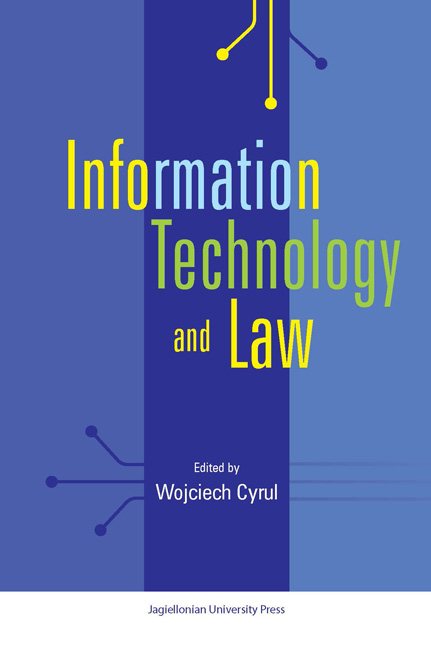Book contents
- Frontmatter
- CONTENTS
- Preface
- Chapter 1 Technological Destabilization of Law
- Chapter 2 Problems with the Storing and Presentation of Information
- Chapter 3 XML Models for Legal Documents: Current Polish Practices and International Standards
- Chapter 4 Similarity Analysis of Polish Legal Documents Using WordNets Semantic Relations
- Chapter 5 Consolidation of Legal Documents in an Electronic Format
- Chapter 6 A Three Dimensional – Code and a Question of the Normative Hyper-linking?
- Chapter 7 The Law, Labour Unions and Information Technology: Enhancing or Restricting Democracy at the Workplace
- Chapter 8 Protection of the Consumer in Digital Content Contracts
- Chapter 9 Procedure, Time and Imputation in Criminal Law
Chapter 7 - The Law, Labour Unions and Information Technology: Enhancing or Restricting Democracy at the Workplace
Published online by Cambridge University Press: 05 December 2014
- Frontmatter
- CONTENTS
- Preface
- Chapter 1 Technological Destabilization of Law
- Chapter 2 Problems with the Storing and Presentation of Information
- Chapter 3 XML Models for Legal Documents: Current Polish Practices and International Standards
- Chapter 4 Similarity Analysis of Polish Legal Documents Using WordNets Semantic Relations
- Chapter 5 Consolidation of Legal Documents in an Electronic Format
- Chapter 6 A Three Dimensional – Code and a Question of the Normative Hyper-linking?
- Chapter 7 The Law, Labour Unions and Information Technology: Enhancing or Restricting Democracy at the Workplace
- Chapter 8 Protection of the Consumer in Digital Content Contracts
- Chapter 9 Procedure, Time and Imputation in Criminal Law
Summary
1. Introduction
The use of information technology within the law is typically seen as the process of capturing and digitalizing legal decisions for easy dissemination, for example through databases. However, information technology can also be seen as affecting the actual law-making process. This arguably is the case with the use by the labour unions in Sweden with respect to information technology and social media in the collective bargaining process. Due to the uniqueness of the Swedish labour law model, this use can be seen as directly affect the making of the law, here collective agreements. The use of information technology within this setting raises the question of whether democracy in the workplace is enhanced or restricted. This article first sets out the parameters of the Swedish labour law model, and then looks at the relationship of the social partners and their members. The third section takes up the use of social media and information technology by certain of the Swedish social partners. The article concludes with a discussion whether this use moves the law forward, or instead, leaves the law-making simply in the hands of those who are most technically savvy, in essence diminishing democracy in the work place as opposed to expanding it.
2. The Swedish labour law model
The Swedish labour law model (den svenska arbetsrättsmodellen), established already at the turn of the twentieth century, is characterized by a high degree of self-regulation between the social partners.
- Type
- Chapter
- Information
- Information Technology and Law , pp. 103 - 126Publisher: Jagiellonian University PressPrint publication year: 2014



